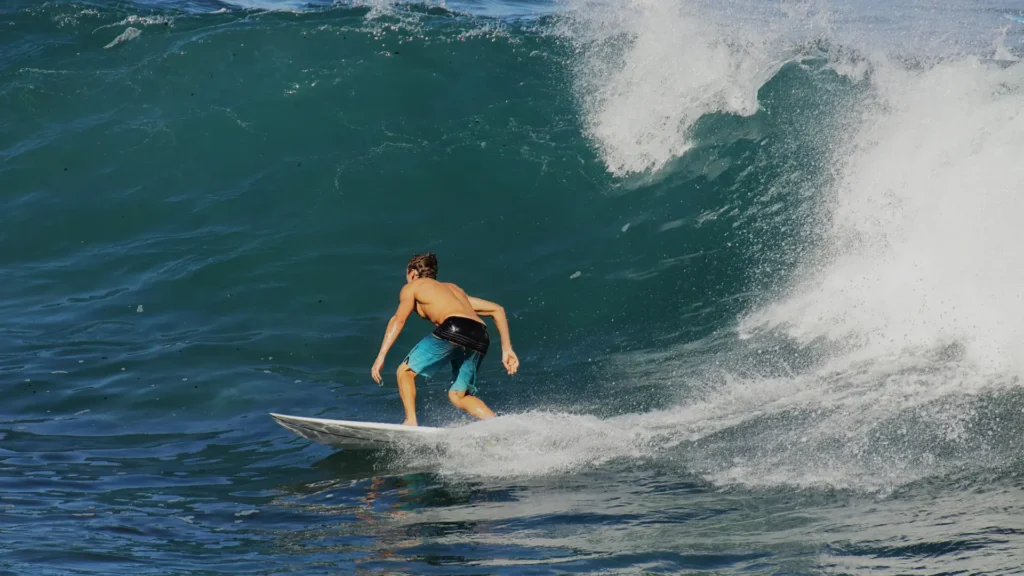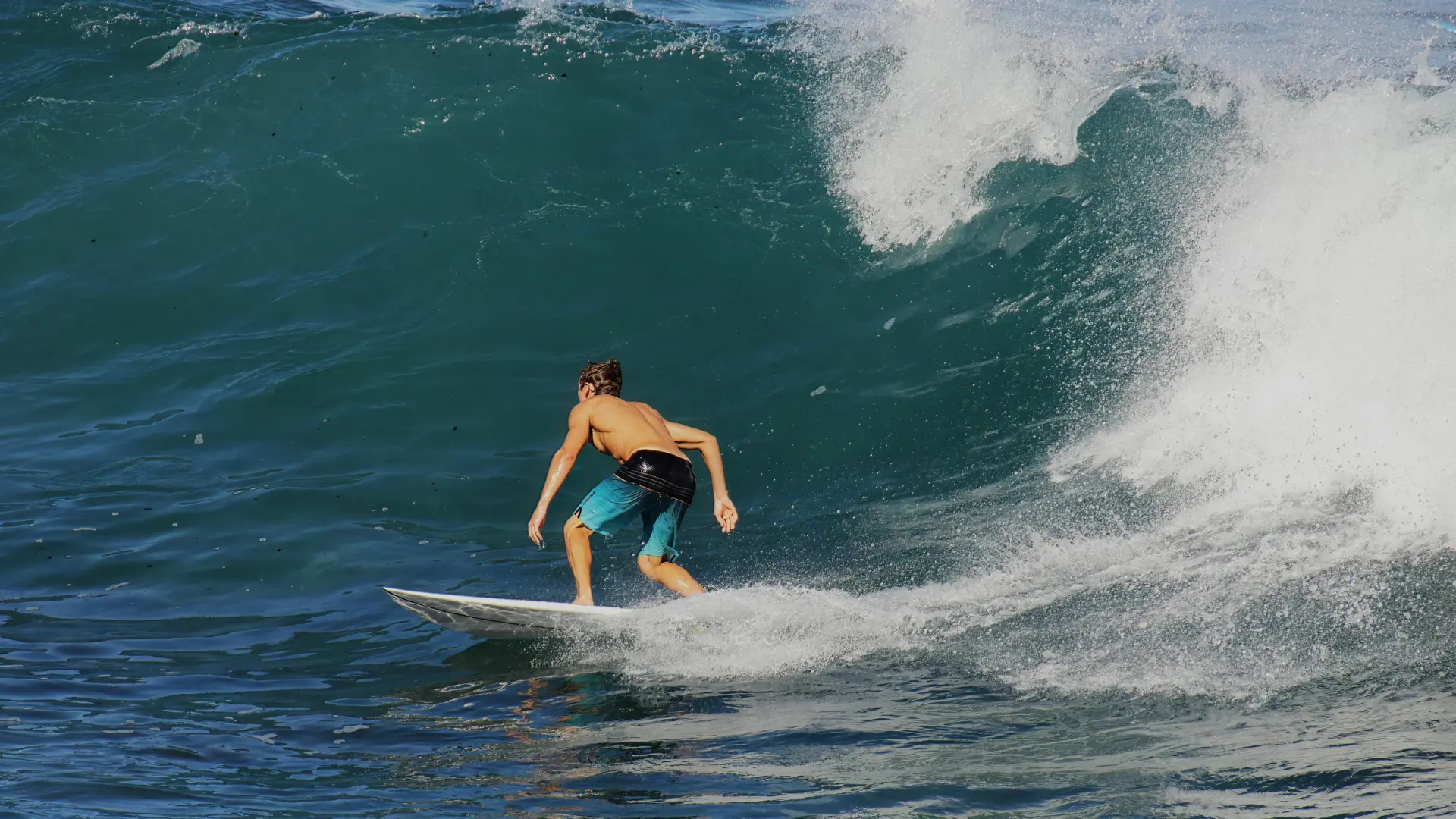You know that moment—standing on the board for the first time, heart pounding, eyes fixed on the approaching swell. But something feels a little off. You naturally shift your right foot forward, and suddenly it clicks. You’re not awkward—you’re just goofy. Goofy foot surfing is more than a quirky label; it’s a unique way of riding waves that can set your style apart and give you an edge on the water. Whether you’re new to surfing or a seasoned rider, understanding and embracing your stance could change the way you experience every ride.

Table of Contents
What Is Goofy Foot Surfing? A Beginner’s Guide to Surf Stances
Understanding the Goofy Foot Stance
In surfing, your stance is everything. “Goofy foot” refers to riding with your right foot forward, while your left foot controls the tail of the board. This contrasts with the more common regular foot, where the left foot leads.
Quick Comparison: Goofy vs Regular Stance
| Feature | Regular Foot | Goofy Foot |
|---|---|---|
| Front Foot | Left | Right |
| Stance Prevalence | Around 65-70% | Around 30-35% |
| Best for | Right-hand waves | Left-hand waves |
Finding Your Natural Stance
You can determine your stance by:
- The Slide Test: Run and slide on a smooth floor. The foot you put forward is likely your lead.
- Previous Board Sports: If you skateboard or snowboard, your stance often carries over.
- Surf Simulators: These mimic wave movements and help you test comfort in both stances.
The Science Behind Surfing Stances
Balance and Body Mechanics
As a goofy foot surfer, your dominant foot at the back gives you better control over the board’s direction and maneuverability. This affects:
- Your center of gravity
- How your hips and shoulders align on the wave
- Your ability to make sharp turns and cutbacks
Muscle Memory and Neural Response
Your stance is wired into your brain’s motor memory. That’s why switching from regular to goofy (or vice versa) often feels awkward. It’s not just about foot placement—it’s a whole-body reprogramming.
Why Goofy Foot Surfing Gives You an Edge
Natural Advantage on Left-Hand Waves
Goofy surfers tend to shine on left-breaking waves, where your chest faces the wave, offering better visual control and more powerful turns.
A Distinctive Surf Style
Because most surfers ride regular, your goofy stance naturally brings a different line, angle, and flow to your performance. You’ll stand out in:
- Competitions where unique style is judged
- Free surf sessions where individuality shines
Strength in Versatility
Being a goofy foot can help if you also snowboard, wakeboard, or skate—board sports where stance plays a critical role.
Tips to Improve Your Goofy Foot Technique
Body Positioning Essentials
- Stay Low: Keep your knees bent for balance
- Lead with Shoulders: Initiate turns using your upper body
- Eyes Forward: Always look where you want to go, not down
Goofy-Friendly Equipment Choices
While most surfboards are symmetrical, some features can enhance your performance:
- Tail design suited for tight turns
- Fins angled to support right-foot-forward control
Best Surfboards for Goofy Riders
| Board Type | Best For | Why It Works for Goofy Riders |
| Fish Board | Small waves, tricks | Maneuverable and responsive |
| Hybrid Shortboard | All-around surfing | Balanced between speed and stability |
| Funboard | Beginners and intermediates | Forgiving shape, easier stance work |
Goofy Foot Legends Who Shaped the Surfing World
Notable Goofy Foot Surfers
- Tom Carroll: Known for explosive power and tube riding
- CJ Hobgood: Champion surfer with unmatched left-barrel skills
- Gabriel Medina: Brazilian superstar famous for aerials and flow
What Made Them Exceptional
These surfers didn’t just ride goofy; they redefined it. They:
- Customized training to their stance
- Leveraged left breaks to dominate
- Built a following through distinct visual styles
Challenges Goofy Surfers Face (and How to Conquer Them)
Limited Left-Hand Waves
In some locations, right-hand breaks dominate, which can challenge your positioning. Solutions:
- Travel to left-friendly spots
- Use wave pools that simulate both directions
Top Destinations for Left-Break Waves
| Location | Country | Break Type | Surf Level |
| Uluwatu, Bali | Indonesia | Reef break, left | Advanced |
| Raglan, New Zealand | New Zealand | Point break, left | Intermediate |
| Chicama, Peru | Peru | Longest left break | All levels |
Instructional Gaps
Most tutorials cater to regular-foot surfers. If you’re goofy:
- Look for mirrored video tutorials
- Practice with goofy coaches or community groups
Train Like a Goofy Pro: Drills and Workouts
On-Land Training
- Surfskate Practice: Simulate surf turns on pavement
- Balance Board Exercises: Sharpen core control and footwork
In-Water Training
- Paddle-pop drills for pop-up accuracy
- Repetition on small waves to lock in muscle memory
Strength and Flexibility
- Yoga sequences for hip and ankle mobility
- Core workouts emphasizing twist and rotation control
Conclusion:
Surfing isn’t about fitting a mold. It’s about expression, rhythm, and flow. If you’re a goofy foot, own it. That stance isn’t just your natural way of riding—it’s your secret weapon. Use it to carve your signature on every wave, to innovate, and to inspire. Whether you’re a grom or a veteran, you bring something different to the break. So paddle out, stand tall, and let your right foot lead the way.
FAQ : about Goofy Foot Surfing
Is being goofy-footed a disadvantage?
Not at all. Some of the best surfers in the world ride goofy. It’s just a different approach, not a limitation.
Can I switch from regular to goofy?
Yes, but it requires commitment. Some surfers become switch-foot to ride comfortably in either stance.
What percentage of surfers are goofy foot?
About 30-35% of surfers ride goofy, making it the minority but by no means rare.
Are surfboards different for goofy riders?
Most are symmetrical. However, you can customize fins and tail shape to suit your preferences.








Leave a Reply